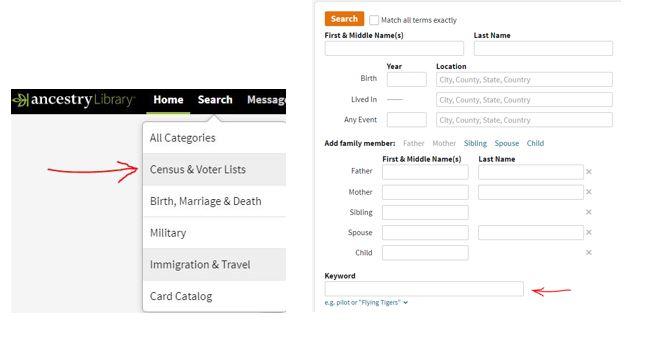
When it comes time to write your family history, you might think of adding information from the following sources to your narrative: city directories, addresses from the US Census, and Sanborn maps. These resources will help give you a sense of the events that shaped your ancestor’s life. Firstly, how do you find out where your ancestor lived? Start with city directories in the city where you believe your ancestor lived.
City directories have a wealth of information in them about people who lived in a certain town or city in a certain year. The information includes the person’s name, a spouse (if there is one), where they lived, their occupation, and people living in the same house or in the neighborhood. You could find others you are related to just by searching a city directory which has an alphabetical name listing.
The library has the Miller City Directory from 1938 to 1954 and the Polk City Directory from 1955 to 2016 at our Headquarters library. You can't check the directories out but you are more then welcome to scan and copy the pages you need. These directories are great for genealogists as they have not only the address of the person, but also their occupation. As an example, my paternal grandfather, Norman Scott, lived in National City, California. The Polk Directory for California has this listing for him, plus his wife and his occupation:

This information tells me that Mr. Scott was married to Margaret. They lived at 825 Highland Ave., National City, California. The “h” before the address means that he is a householder. Norman was an airplane mechanic. From this directory, I can now search for the house they lived in. By checking a few years in the past or future, you can find out the years your ancestor lived in a certain location. For Norman, the 1941 city directory has him still living at the same address:

A city directory can also help historians trace the history of a building, of a business, or of a church. Definitely, this is a useful tool if you are studying the history of your ancestors’ lives.
What do you do if you hit a brick wall concerning your ancestor? For example, you have followed that ancestor from 1940 back through 1910 but suddenly in the 1900 census, you can't find them. It could be that the name was misspelled or that they just got skipped during census-taking time in April. You can search by the address you last found your ancestor in the United States Census, or you can search with Ancestry Library Edition at an Alachua County Library District branch or from your home computer until December 31, 2021.
Begin by logging into Ancestry Library Edition with your library card:

In the keyword area, put the last known address of your ancestor and then click on the search button. Don’t add any other information. This will bring up the census listings for all who lived at that address. Check the names carefully for misspelled names as well. If there are no misspellings, then they moved to that address after the census was taken. Go back to the city directories for that city and search the years from the last census date you found to the date when your ancestor appears.
While the house that Norman and Margaret lived in National City was torn down, I did find my great-grandfather George Scott’s home in San Antonio. He lived on 547 Porter Street with the cross street Nopal Street. Both streets are still in San Antonio. What has changed is that the house was made into a duplex and another address was added - 549 Porter Street. As you can see from the pictures, the original house was big enough for the Scott family of five:

This is the front view and side view of the house. It is the last house on the block according to the 1920 United States Federal Census records. What a wonderful find!
For a genealogist who is researching their ancestor’s life, having an historical map can be a valuable tool in examining how they lived and worked. The Sanborn Fire Insurance Map Company was founded in 1867 by D.A. Sanborn, a surveyor, to compile and publishing fire insurance maps for commercial, industrial and residential buildings in cities and towns. The maps were made from 1867 to the 1950’s when the company went out of business. The Library of Congress (L)C) has over 50,000 editions of the maps with approximately 700,000 sheets. As the towns and cities grew, the number of sheets for the maps grew too. The LC has a great “About this Collection” article that will get you up to speed on how to read the maps. I would definitely take the time to read this before jumping into searching for your ancestors’ hometowns. The LOC collection has 428 Florida town maps. Visit the LOC Sanborn Map Collection online if your ancestors are from another part of the United States.
Closer to home, the University of Florida George A Smathers Libraries has a collection of Sanborn maps for Florida, consisting of more than 300 editions with more than 3,000 sheets. As you can see, Gainesville has 8 map sets ranging from 1884 to 1922. The 1884 set has two sheets whereas the 1922 set has 27 sheets:

Gainesville is not the only Florida town to have Sanborn maps. You can search the collection for other places in Florida. Remember that Gainesville changed the names of streets into a grid system in 1950, according to a Gainesville Sun article. The Matheson Museum has a conversion chart online.
With these tools, you can add a lot to your family's history. October is National Family History Month - what a great time to get started!